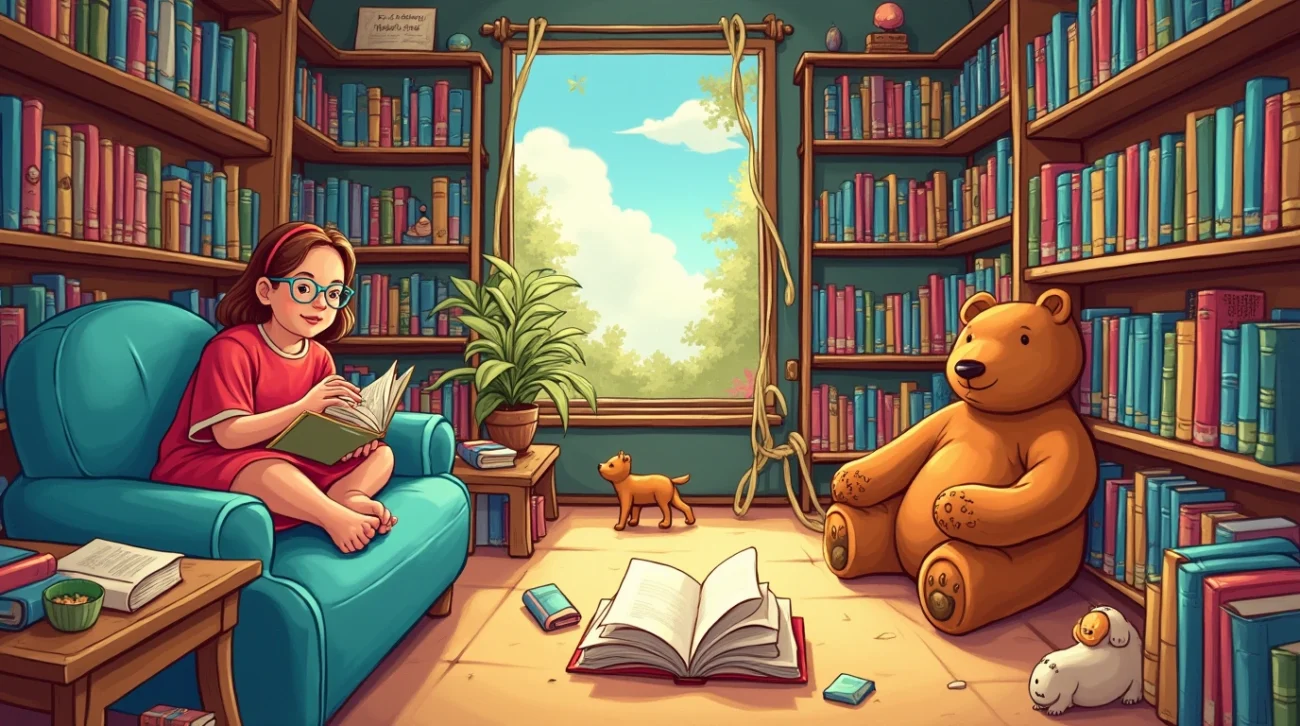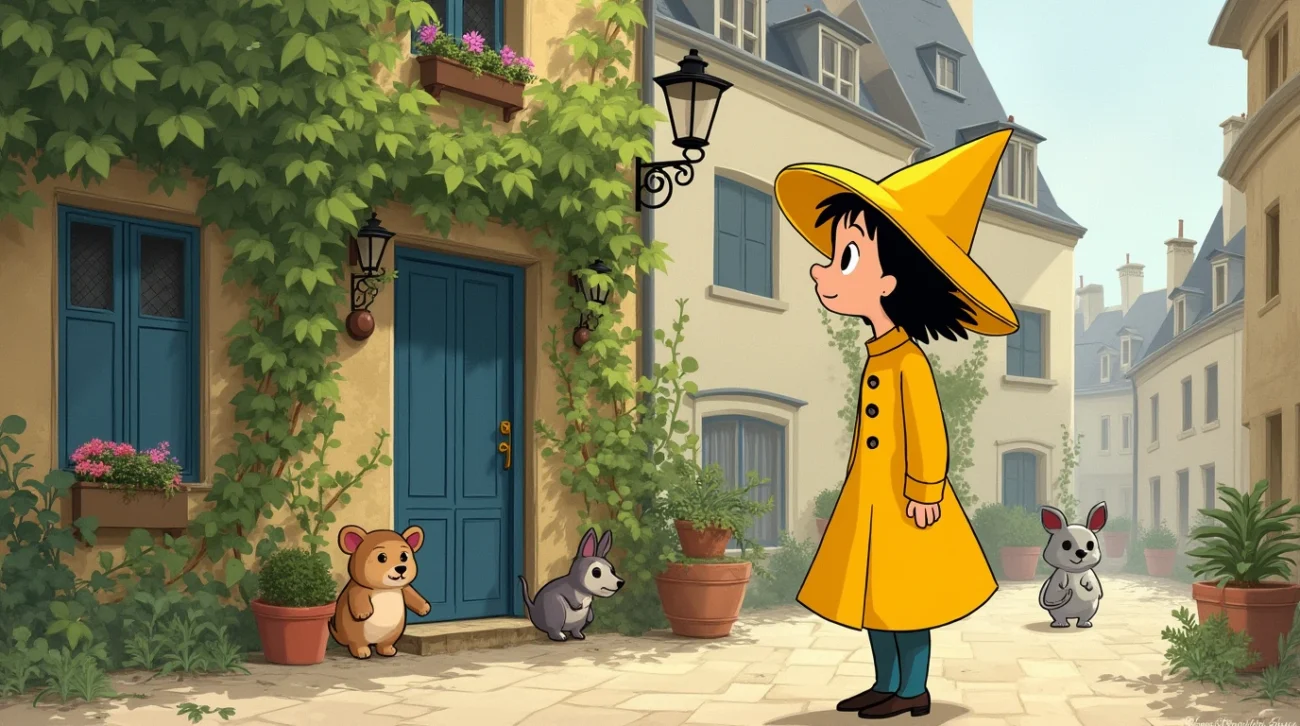Neil Gaiman is a celebrated author known for his ability to craft compelling, magical worlds filled with mystery, wonder, and occasionally, a touch of darkness. His unique storytelling style has captured the hearts of readers of all ages, but his children’s books hold a special place, especially for young readers discovering the joys of reading. Gaiman’s books like Coraline, The Graveyard Book, and Fortunately, the Milk have become beloved classics, offering both entertainment and meaningful lessons. Gaiman’s work goes beyond simple storytelling, creating a space where children can explore complex themes in a way that’s accessible and engaging. Let’s explore what makes Neil Gaiman childrens books so exceptional and why they’re perfect for sparking a love for reading in young minds.
Who is Neil Gaiman?
Neil Gaiman is a British author known for his versatile writing across various genres, including fantasy, horror, and children’s literature. His works have been praised for their rich imagination, relatable characters, and skillful blending of the ordinary with the extraordinary. His unique style appeals to readers of all ages, particularly through his children’s books, which introduce complex ideas in a simple and impactful way.

Why Neil Gaiman’s Books Are Loved by Children
Children are naturally drawn to stories that ignite their imaginations, and Gaiman’s books excel in this regard. His characters and worlds feel both familiar and fantastical, which makes his stories highly engaging for young readers. Below are a few reasons why kids adore his books:
- Imaginative Worlds
Gaiman’s stories often take readers to enchanted realms filled with magic, mystery, and just a hint of the eerie. These worlds allow children to explore beyond their everyday experiences, sparking curiosity and a sense of wonder. For example, Coraline transports readers into a parallel world that mirrors reality but is filled with chilling twists, making it both thrilling and captivating. - Relatable Characters on Personal Journeys
Gaiman’s characters often embark on journeys that reflect challenges and growth, mirroring the real-life experiences of young readers. This relatability fosters empathy and understanding, allowing children to see themselves in the characters and feel connected to the story. - Engaging, Adventure-Packed Plots
Gaiman’s books are filled with surprising twists and turns, keeping young readers engaged and encouraging them to read more. Each story unfolds with a sense of suspense and adventure, whether it’s The Graveyard Book, where a boy is raised by ghosts, or Fortunately, the Milk, which follows a father’s outrageous adventure to bring milk home for breakfast.
Exploring Complex Themes with a Gentle Touch
One of Neil Gaiman’s strengths as a children’s author is his ability to weave complex themes into his stories without overwhelming young readers. His books often address topics such as courage, identity, friendship, and resilience in a way that is accessible to children but still meaningful. By presenting these themes subtly, Gaiman encourages children to reflect on important life lessons while enjoying an engaging story.
Embracing the Dark and Spooky
Neil Gaiman isn’t afraid to introduce darker elements into his children’s books, which makes his storytelling unique. By incorporating suspense and mystery, he creates a safe space for young readers to experience and process complex emotions like fear and curiosity. This aspect of his work is particularly visible in Coraline, where the protagonist faces unsettling challenges. Gaiman’s skillful handling of dark themes helps children develop resilience and understand that facing fears can be empowering.
The Benefits of Reading Neil Gaiman’s Books for Young Readers
Gaiman’s books are not just entertaining; they also offer several developmental benefits for children:
- Inspires Creativity and Curiosity
Gaiman’s stories encourage children to think beyond the boundaries of their everyday lives. His imaginative worlds and characters spark curiosity, inviting young readers to explore new ideas and embrace creativity. - Fosters Critical Thinking and Empathy
By presenting relatable characters who face challenges, Gaiman’s stories teach children to think critically and empathize with others. His books often involve moral lessons or choices, encouraging young readers to reflect on the consequences of different actions. - Builds Emotional Resilience
Gaiman’s willingness to explore darker themes provides young readers with a safe way to experience fear and suspense. Through his stories, children learn how to confront and manage complex emotions, which can be valuable for building resilience.
Popular Neil Gaiman Books for Children
If you’re looking to introduce a young reader to Neil Gaiman, here are a few popular titles that are sure to captivate:
- Coraline
Coraline follows a young girl who discovers a secret door in her home, leading to an alternate world. This world is seemingly perfect at first, but it soon reveals its sinister side. Themes of bravery, curiosity, and family run through the story, making it a thought-provoking read for children. - The Graveyard Book
This Newbery Medal-winning novel tells the story of Nobody Owens, or “Bod,” a boy raised by ghosts in a graveyard after his family is murdered. The book combines themes of friendship, identity, and courage, offering an unforgettable story that’s both entertaining and meaningful. - Fortunately, the Milk
This lighthearted story follows a father’s hilarious adventure as he tries to bring milk home for his children. Along the way, he encounters pirates, dinosaurs, and time-traveling aliens. Fortunately, the Milk is full of humor and creativity, making it a perfect choice for younger children. - The Ocean at the End of the Lane
Although technically written for adults, this book is accessible to older children and young adults due to its exploration of memory, innocence, and the mysteries of childhood. The story revolves around a man who returns to his hometown and recalls strange events from his past, blending fantasy and reality in Gaiman’s signature style.
The Impact of Illustrations in Gaiman’s Books
Illustrations play a crucial role in many of Neil Gaiman’s children’s books, adding an extra layer of depth and engagement to his stories. Collaborations with talented illustrators like Chris Riddell bring his worlds to life, making the reading experience more immersive. Illustrations help young readers visualize characters and settings, making it easier for them to connect with the story and enhancing their overall comprehension.
Why Parents and Educators Recommend Neil Gaiman’s Books
Parents and educators value Neil Gaiman’s books for their ability to entertain and educate. His books introduce young readers to complex ideas and emotions, providing a platform for discussions about important themes. Gaiman’s storytelling also encourages children to develop a love for reading and creativity, making his works a valuable addition to any child’s library.
How to Choose the Best Neil Gaiman Book for Your Child
When selecting a Neil Gaiman book for a child, consider their age, interests, and reading level. Here’s a quick guide:
- For Younger Children (6-8 years): Fortunately, the Milk and The Day I Swapped My Dad for Two Goldfish offer whimsical, lighthearted stories that are easy to follow.
- For Middle-Grade Readers (9-12 years): Coraline and The Graveyard Book provide more adventurous, suspenseful tales that deal with courage and self-discovery.
- For Older Children and Teens (13+ years): The Ocean at the End of the Lane offers a deeper, more reflective story that’s suitable for older readers.
Frequently Asked Questions
Q1: Are Neil Gaiman’s children’s books suitable for all ages?
Some of Gaiman’s books, like Coraline and The Graveyard Book, feature darker themes and may be best suited for older children. However, books like Fortunately, the Milk are lighter and appropriate for younger readers.
Q2: Why does Gaiman include dark elements in children’s books?
Gaiman’s use of dark themes helps children confront and understand complex emotions, teaching resilience and bravery in a safe, controlled environment.
Q3: How do illustrations enhance Gaiman’s storytelling?
Illustrations in Gaiman’s books bring his characters and settings to life, making it easier for young readers to connect with the story and enhancing their comprehension.













